日中伝熱シンポジウム2020

ProgramCONCEPT
Date
Welcome Reception [19:00-21:00]
Opening Ceremony [8:30-9:00]
Opening and guests Introduction
NAGAI, Niro [永井二郎] (Chair of Executive Committee, Professor,
University of Fukui)
UTAKA, Yoshio [宇高義郎] (Professor, Tianjin University)
Welcome speech from The Heat Transfer Society of Japan
TAKATA, Yasuyuki [高田保之] (President of the Heat Transfer Society of Japan, Professor, Kyusyu University)
KATO, Yukitaka [加藤之貴](Deputy Chair of Specific Research Committee
of the Heat Transfer Society of Japan, Professor, Tokyo Institute of Technology)
Speech from Heat and Mass Transfer Society of China
ZHANG, Xing [张兴] (President of Heat and Mass Transfer Society of China, Professor, Tsinghua University)
Group photo taking
Lectures (40min each: 30min presentation + 5-10 min question)
Session 1 [9:10-10:30]
Chairs:KATO, Yukitaka [加藤之貴], CHEN,
Zhihao [陈志豪]
NAGANO Housei [長野方星] (Professor, Nagoya University) [9:10-9:50]
Thermo-Fluid Characterization in a Microscale Porous Structure based on Visualization and Modeling for Two-Phase Heat Transfer Devices Using Capillary Action
JIANG, Yuyan [姜玉雁] (Professor, Institute of Engineering Thermophysics, Chinese Academy of Science) [9:50-10:30]
Loop Thermosyphon with High Filling Ratios: Research and Applications
Session 2[10:40-12:00]
Chairs:SAKURAI, Atsushi [櫻井篤], CHEN,
Li [陈黎]
TAGUCHI, Yoshihiro [田口良広] (Associate Professor, Keio University) [10:40-11:20]
Recent Progress of Optical Sensing Techniques for Thermophysical
Properties Engineering
ZHU, Jie [祝捷] (Associate Professor, Dalian University of Technology) [11:20-12:00]
Thermal Transport Characterizations in Micro/Nano-Structured
Materials by Ultrafast Laser Pump and Probe Method
Lunch [12:00-13:20]
Session 3 [13:20-14:40]
Chairs:TANAHASHI, Mamoru [店橋護],WEI, Jie [魏杰]
SHIMOKURI, Daisuke [下栗大右] (Associate Professor, Hiroshima University) [13:20-14:00]
Development Powerful Miniature System with Vortex Combustor
ZHOU, Lei [周磊] (Associate Professor, Tianjin University) [14:00-14:40]
Fundamental Investigation of Flame-Shock Interactions and End
Gas Autoignition in a Confined Space
Session 4 [14:50-16:10]
Chairs:TSUSHIMA, Shoji [津島将司], WANG,
Shuangfeng [汪双凤]
KOMIYA, Atsuki [小宮敦樹] (Professor, Tohoku University) [14:50-15:30]
Visualization of Precursor Film Dynamics of Small Droplet by
Phase-Shifting Ellipsometer
WANG, Hao [王昊] (Associate Professor, Peking University) [15:30-16:10]
From Contact Line Structures to Wetting Dynamics
Coffee Break(16:10-16:25)
Session 5 [16:25-17:45]
Chairs: NAGAI, Niro [永井二郎], CHEN, Lin [陈林]
FUKUSHIMA, [福島啓悟] (Lecturer, University of Fukui) [16:25-17:05]
Molecular Dynamics Study of Water Droplet Dynamics on Solid
Wall in High Temperature Condition
CHEN, Jie [陈杰] (Professor, Tongji University) [17:05-17:45]
Thermal Transport in Graphene-Based Nanomaterials
Closing Ceremony [17:45-17:50]
Banquet [19:00-21:00]
Introduction of Speakers
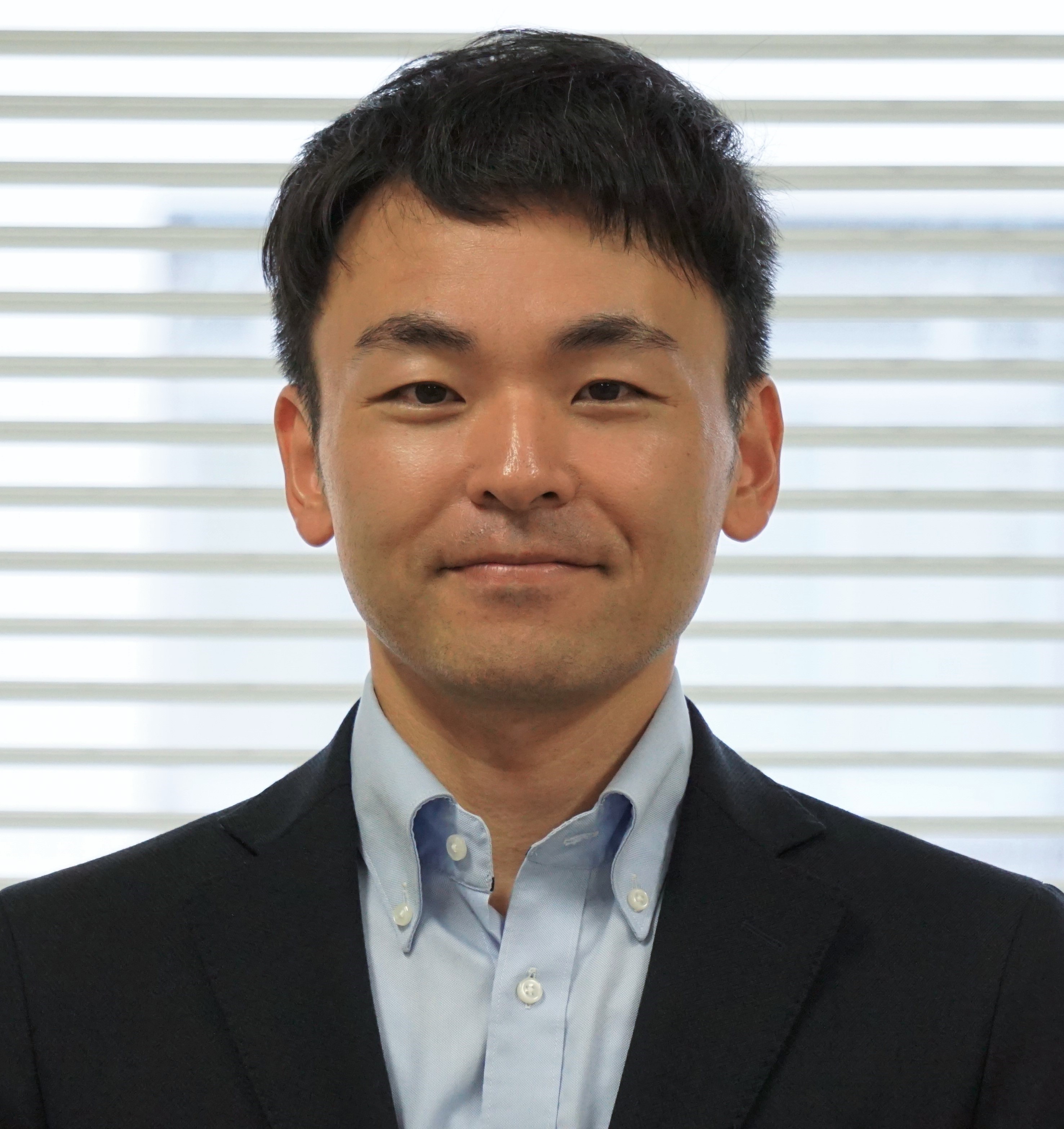 |
■■■ NAGANO, Housei [長野方星] |
| Housei Nagano received Ph.D degree from Keio University (2003), post-doctoral research fellow at Keio University (2003-2005), Visiting Researcher in NASA Goddard Space Flight Center (2005-2008). He started working in Nagoya University at 2008 as Lecture, and Professor from 2016. His research interests include two-phase heat transfer, spacecraft thermal control, and thermophysical properties of advanced materials. |
| Professor, Department of Mechanical System Engineering, Nagoya University ……………………………………………………………………………………… ■Presentation Title■ Thermo-Fluid Characterization in a Microscale Porous Structure based on Visualization and Modeling for Two-Phase Heat Transfer Devices Using Capillary Action <ABSTRACT> Two-phase heat transfer devices utilizing the capillary action in a microscale porous structure, such as the loop heat pipe (LHP), are a promising heat transport technology. This is due to the fact that the LHP has characteristics of higher heat transfer power and longer heat transport distances in comparison to conventional heat pipes. Additionally, LHPs do not require electrical power to operate. As a result of its capillary force, the LHP can be operated under no-gravity and even anti-gravity conditions, enabling the LHP to be applied to various thermal applications such as cooling or heat utilization for automobiles, electronic devices, and spacecraft. The thermal performance of an LHP is governed by the thermofluidic behavior in a microscale porous structure called the wick. Therefore, it is essential to understand the behavior of the wick in order to develop higher performance LHPs. In this study, observation and modeling of the thermo-fluid behavior on the surface of porous materials was conducted by using microscale visible and infrared imaging. Utilizing this knowledge, LHPs of various scales such as a 1mm thin LHP, a 10m long distance LHP, and a 5kW high power LHP have been developed. Return to Session1 |
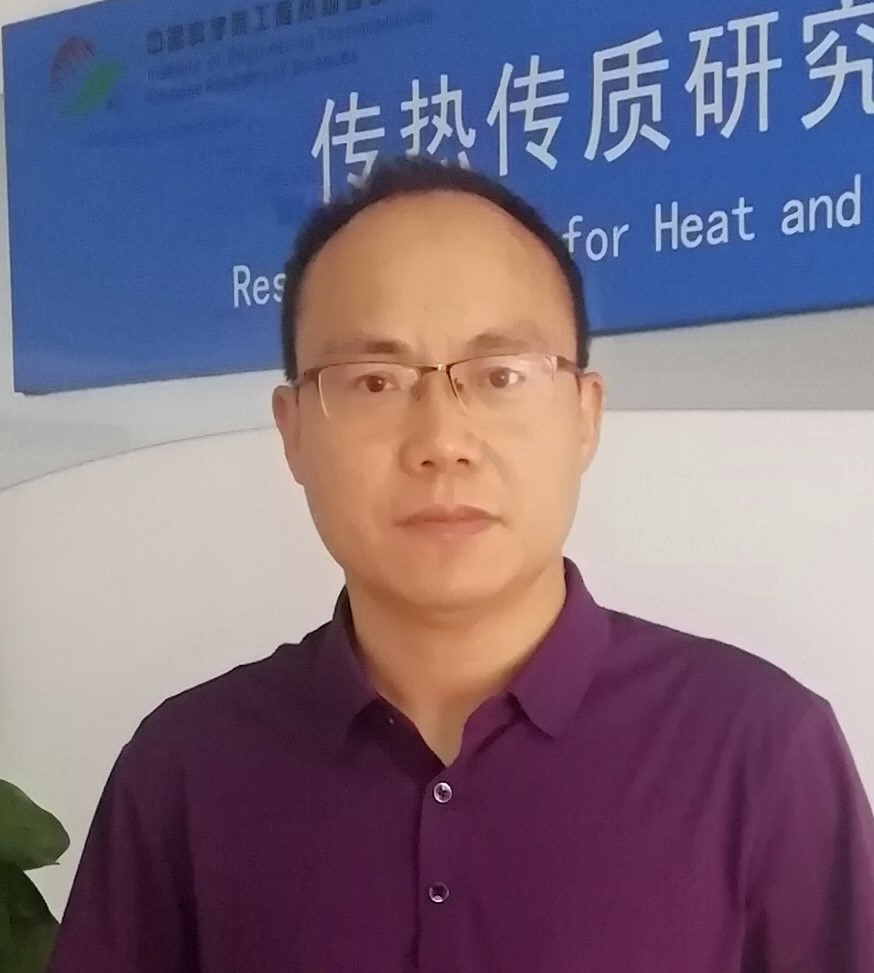 |
■■■ JIANG, Yuyan [姜玉雁] |
| Yuyan Jiang received a Ph.D degree from the University of Tokyo (2002), post-doctoral researcher in IIS, the University of Tokyo (2002-2008), and a Visiting Researcher in Toyota Central R&D Labs Inc. (2008-2011). He has published more than 90 journal papers and has 30 disclosed patents. His research interests include boiling heat transfer and heat pipe, computational simulations of multi-physics flow phenomena, and supercritical CO2 Brayton power cycles. |
| Professor, Institute of Engineering Thermophysics (IET), Chinese Academy
of Sciences (CAS) ……………………………………………………………………………………… ■Presentation Title■ Loop Thermosyphon with High Filling Ratios: Research and Applications <ABSTRACT> Loop thermosyphons are gravity driven heat transfer devices which have diverse applications including waste heat recovery, thermal management and thermal protection. In common sense the loop thermosyphon should have a low liquid filling ratio, usually less than 30%, in favor of heat transfer performance. We found that the loop thermosyphon with high filling ratios have also some special advantages for high intensity heat transport. In this kind of loop thermosyphons, the thermal-pressure conversation effect becomes significant and helps to enhance the convection and phase-change heat transfer, which gives birth to heat transfer modes and dependence on gravity that are quite different from the conventional ones. The presentation will give a review to the fundamental and application research in last decade. Return to Session1 |
 |
■■■ TAGUCHI, Yoshihiro [田口良広] |
| Yoshihiro Taguchi received B.S., M.S., and Ph.D degrees in mechanical engineering from Keio University in 1999, 2001, and 2004, respectively. He was a postdoctoral researcher at Stanford University from 2004 to 2006. His research interests include optical MEMS devices using near-field optics, near-field fluorescence, thermoreflectance, and molecular vibration spectroscopy for property measurements. |
|
Associate Professor, Department of System Design Engineering, Keio University ……………………………………………………………………………………… ■Presentation Title■ Recent Progress of Optical Sensing Techniques for Thermophysical Properties Engineering <ABSTRACT> In recent years, great advances in optical sensing techniques have brought dramatic progresses in the field of thermophysical properties engineering with brilliant characteristics of superior spatio-temporal resolution and in situ monitoring capabilities. This talk summarizes our recent studies developing new sensing methods to monitor heat and mass transport phenomena. In this presentation, for example, the nano-scale thermometry with less than 100-nm spatial resolution using the highly sensitive near-field optical fiber probe, which was fabricated by the three-step selective chemical etching and the fusion-splicing method, will be demonstrated. Furthermore, the optical sensor based on a laser-induced dielectrophoresis integrated on the micro fluidic chip to measure the diffusion coefficient of biological samples, e.g. protein is reviewed. Fast and high sensitivity detection of the conformational change of biological sample by using the proposed sensor will be discussed. Finally, a new idea of the electrothermal micro actuators fabricated by MEMS (Micro Electro Mechanical Systems) technology is proposed for the novel sensing devices. Return to Session2 |
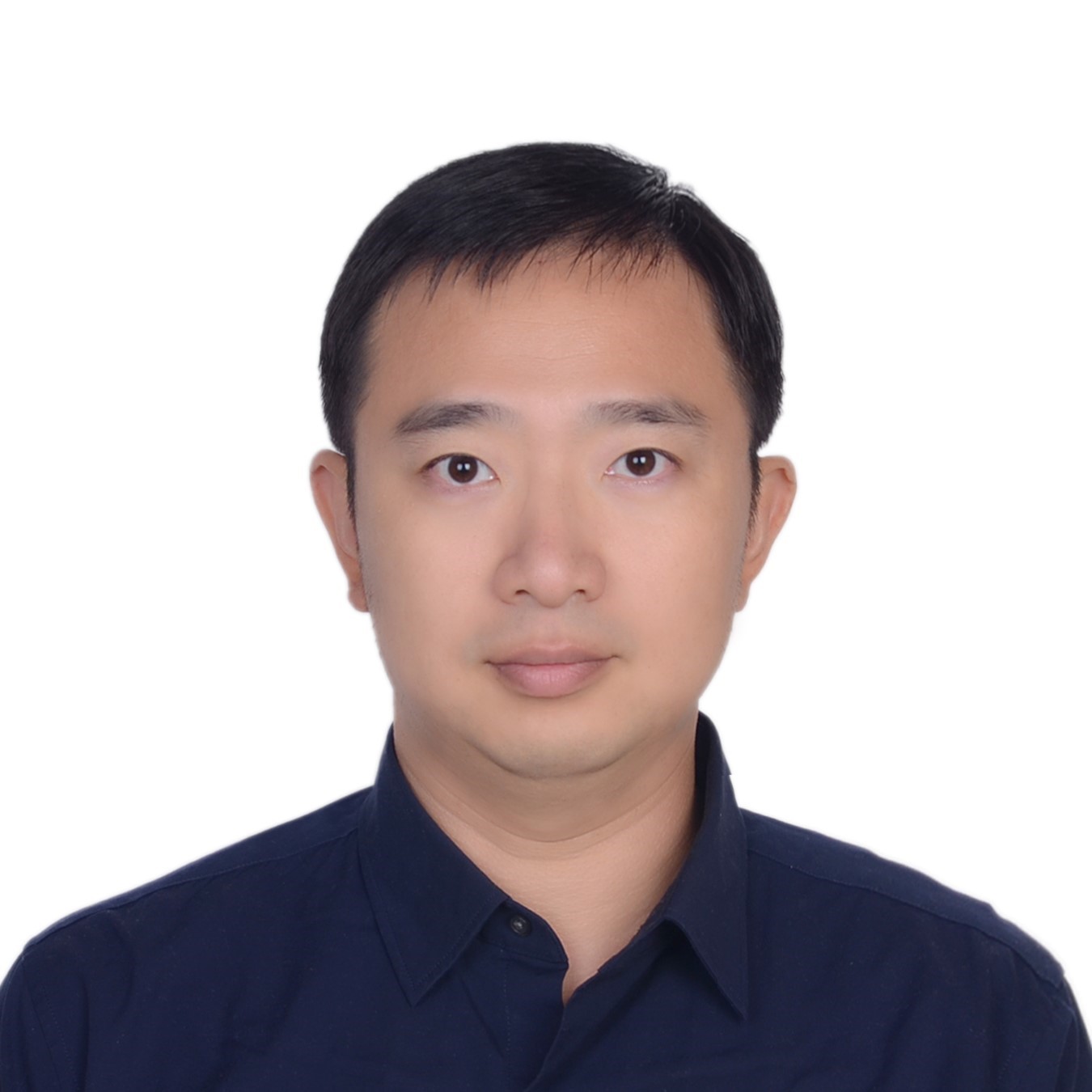 |
■■■ ZHU, Jie [祝捷] |
| Jie Zhu received his B.S. in 2004 from the University of Science and Technology of China, and Ph.D. from Institute of Engineering Thermophysics, Chinese Academy of Sciences in 2011. He was a research associate at University of Minnesota. His research interests include ultrafast non-equilibrium heat transfer, thermal transport across interfaces, thermophysical properties of novel materials, ultrafast spin dynamics, and development of relevant experimental methods. |
|
Associate Professor, School of Energy and Power Engineering, Dalian University of Technology ……………………………………………………………………………………… ■Presentation Title■ Thermal Transport Characterizations in Micro/Nano-Structured Materials by Ultrafast Laser Pump and Probe Method <ABSTRACT> Quantitative characterization of thermal transport properties of micro/nano-structured materials appears to be challenging due to the complex combination of many aspects, such as size effect, anisotropy, interface resistance and multiple energy carriers. In this talk, the thermal characterization method based on ultrafast laser is firstly introduced for this kind of thermal measurements, which is a non-contact optical pump and probe method. The thermal transport investigations are categorized into three different kinds. (1) Nanostructured materials, including the structure-thermal property correlation of either vertically aligned or slanted silicon dioxide (SiO2) nanorod arrays, and the oxygen vacancy ordering effect on the through-plane thermal conductivity of epitaxial La0.5Sr0.5CoO3−δ (LSCO) layer with varying thickness (<20 nm) on LaAlO3 and SrTiO3 substrates. (2) Thermal transport across interfaces, including how different factors affecting the interface thermal conductance between polymer (polystyrene) and inorganic substances (sapphire or silicon), and thermal transport between aqueous solutions and surface-functionalized gold nanorods (GNRs). (3) The anisotropic thermal properties on two-dimentional materials including black phosphorus (BP) and Zirconium pentatelluride (ZrTe5), both are attractive materials due to their extraordinary physical properties and application potential. Some of the work are collaborated with other groups that major in numerical simulations for revealing the origins of the microscopic transport behavior. The results are promising and have shed light in the industrial applications such as thermal management of electronic devices, thermal therapy of diseases, and energy harvest. Return to Session2 |
 |
■■■ SHIMOKURI, Daisuke [下栗大右] |
| Daisuke SHMOKURI received Ph.D degree from Hiroshima University (2006). He started working in Hiroshima University at 2006 as Assistant Professor, and Associate Professor from 2014. His research interests include combustion, flames, emission and energy conversion. |
|
Associate Professor, Hiroshima University ……………………………………………………………………………………… ■Presentation Title■ Development Powerful Miniature System with Vortex Combustor <ABSTRACT> Micro and meso scale combustors have attracted considerable attention as one of energy conversion media of liquid (or liquefied) hydrocarbon fuels which possess considerably higher energy density than the conventional batteries. Then, in this decade, combustion characteristics in micro and meso scale channels have been extensively studied fundamentally and practically. Recently, based on the obtained knowledge, micro combustion power systems aimed practical use has appeared. Currently, the miniature combustion power system using vortex combustor combined with thermos electric device (TED) is the most powerful system which output attained 18.1W and conversion efficiency 3.0% with 600W thermal input by propane air mixture. As a final step, prototype “autonomous” vortex combustion power system to charge the mobile electrical devices has developed. Return to Session3 |
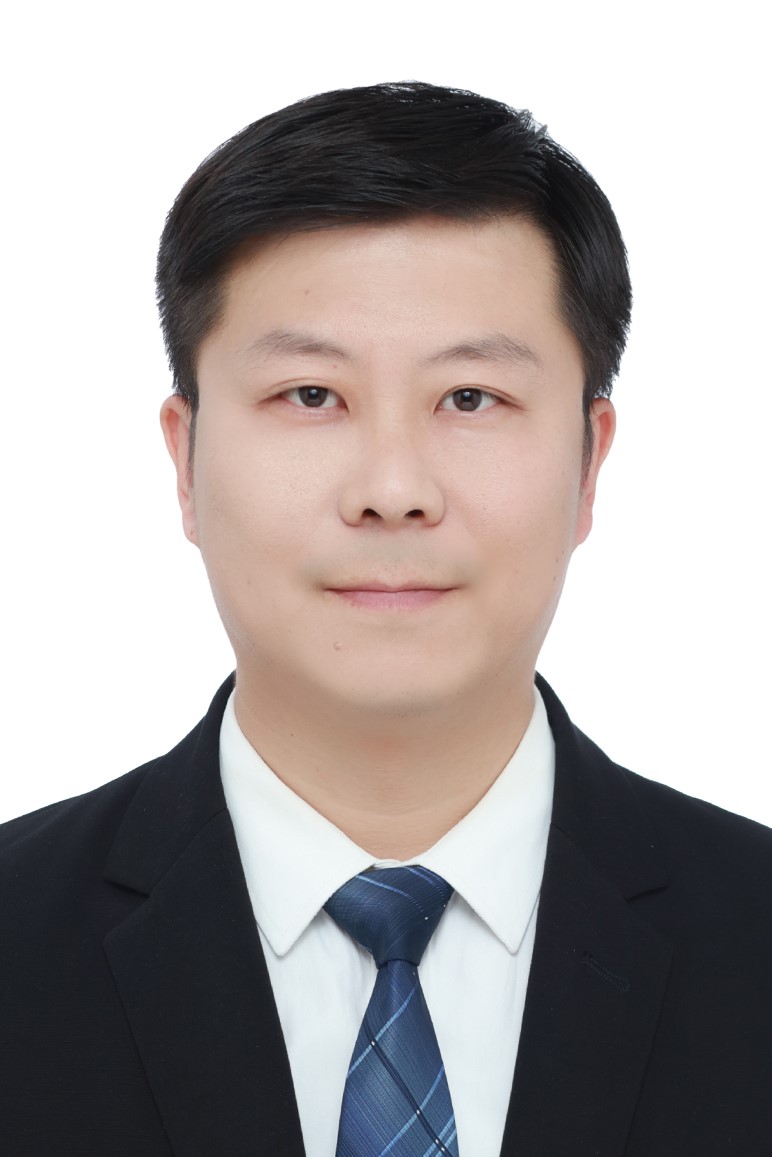 |
■■■ ZHOU, Lei [周磊] |
| Lei Zhou received Ph.D in Engineering Thermophysics, Dalian University of Technology, a postdoctoral worked at the Tsinghua University and Brunel University London. He is the principal investigator for two projects of National Natural Science Foundation of China, and published More than 70 peer-reviewed papers. His research interests include spray turbulent combustion and turbulent combustion-compression waves interactions at extreme conditions in engines. |
| Associate Professor, Tianjin University ……………………………………………………………………………………… ■Presentation Title■ Fundamental Investigation of Flame-Shock Interactions and End gas Autoignition in a Confined Space <ABSTRACT> Turbulent flame is one of the most interesting parts of combustion physics and turbulence research as evidenced by analytical, experimental and computational studies in the past few decades. Of particular interest is turbulent flame acceleration and propagation in confined space. As turbulent combustion in confined space, i.e., confinement, occurs, flame acceleration and expanding propagation will generate a series of compression waves with considerable amplitude. In turn, confinement significantly influences the turbulent flame brush and wrinkles it. Therefore, in flame propagation the flame-shock/acoustic interactions play a vital role and finally determine the turbulent flame development and combustion phenomena. So, this lecture will introduce our recent works involving the flame propagation in a confined space, shock wave formation and enhancement, flame-shock wave interactions, end-gas autoignition as well as pressure oscillation by self-designed constant volume combustion chamber with perforated plate. And then the presentation will briefly introduce the relevant works regarding the flame propagation and detonation, and relationship of flame propagation and end-gas autoignition based on direct numerical simulation(DNS). Return to Session3 |
 |
■■■ KOMIYA, Atsuki [小宮敦樹] |
| Atsuki Komiya received Ph.D. degree in mechanical engineering from Tohoku University in 2002. From 2002 to 2004, he was a Research Fellow with the Japan Aerospace Exploration Agency (JAXA). In 2004, he moved back to the Tohoku University. Since 2019, he has been a Professor of Heat Transfer Control Laboratory in the Institute of Fluid Science, Tohoku University. His research interest is heat and mass transfer control and its investigation. Mainly, he has conducted measurement experiments of heat and mass transfer by using special designed optical system. |
|
Professor, Heat Transfer Control Laboratory, Institute of Fluid Science,Tohoku University ……………………………………………………………………………………… ■Presentation Title■ Visualization of Precursor Film Dynamics of Small Droplet by Phase-Shifting Ellipsometer <ABSTRACT> Phase-shifting ellipsometer, which can precisely visualize two-dimensional thin film thickness at the edge of droplet has been developed in our laboratory. Experimental investigation in the vicinity of boundary area of three phases, solid-liquid-gas interface namely “contact line” is important for understanding of the phase change phenomena, such as boiling, condensation, and surface events such as wetting and drying phenomena. Theoretically, de Gennes has proposed a formula for a thickness of precursor film under the assumption that the wetting process obeys a viscous flow driven by disjoining pressure. This theoretical approach shows a formation of precursor film, however it is difficult to achieve precise measurement of nanoscale thickness of the film. In this study, we have developed a visualization system for the measurement of two-dimensional thickness distribution of the precursor film by using a phase-shifting technique. The proposed system could measure the transient thickness distribution. At the initial stage of droplet formation, the thickness of the edge region got thicker compared with that of inner region. However, its thickness difference decreases with the droplet spreading. From the visualization results of two-dimensional image, the relation between circumferential shape of precursor film and surrounding condition was also discussed. Return to Session4 |
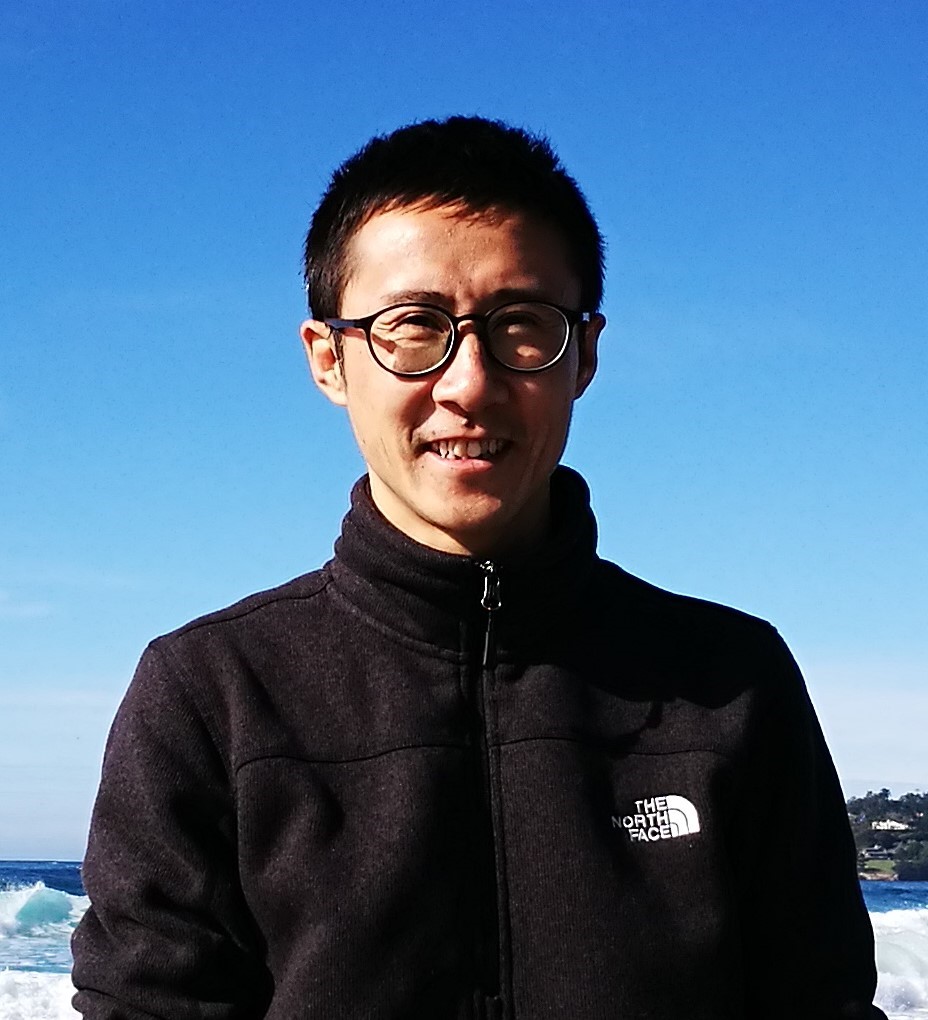 |
■■■ WANG, Hao [王昊] |
| Dr. Hao Wang is an associate professor with tenure in College of Engineering at Peking University. He entered Tsinghua University in 1996 and obtained his Ph.D. degree in 2004, then 3-years postdoctoral experience at Purdue University. From 2007 till now, Dr. Wang has been the director of the Lab of Micro/Nano Heat and Mass Transfer at Peking University. |
|
Associate Professor, College of Engineering, Peking University ……………………………………………………………………………………… ■Presentation Title■ Presentation Title: From Contact Line Structures to Wetting Dynamics <ABSTRACT> Wetting is ubiquitous in nature and industry processes. It is the front of the liquid interface on the solid, i.e. the contact line that determines the wetting dynamics. However, for many years the contact line was merely treated as a one-dimensional boundary due to the extreme lack of detail information, which in practice led to singularity in fluid dynamic analysis and remained wetting as unpredictable. This talk will introduce the most recent mesoscopic exploration of the contact line and the origins it unveils of the wetting dynamics. The defects of the prevailing theory based on the concept of the disjoining pressure will be discussed. A brief introduction will be made to the related applications in phase-change heat transfer, nanofabrication, and air-pollution control. Return to Session4 |
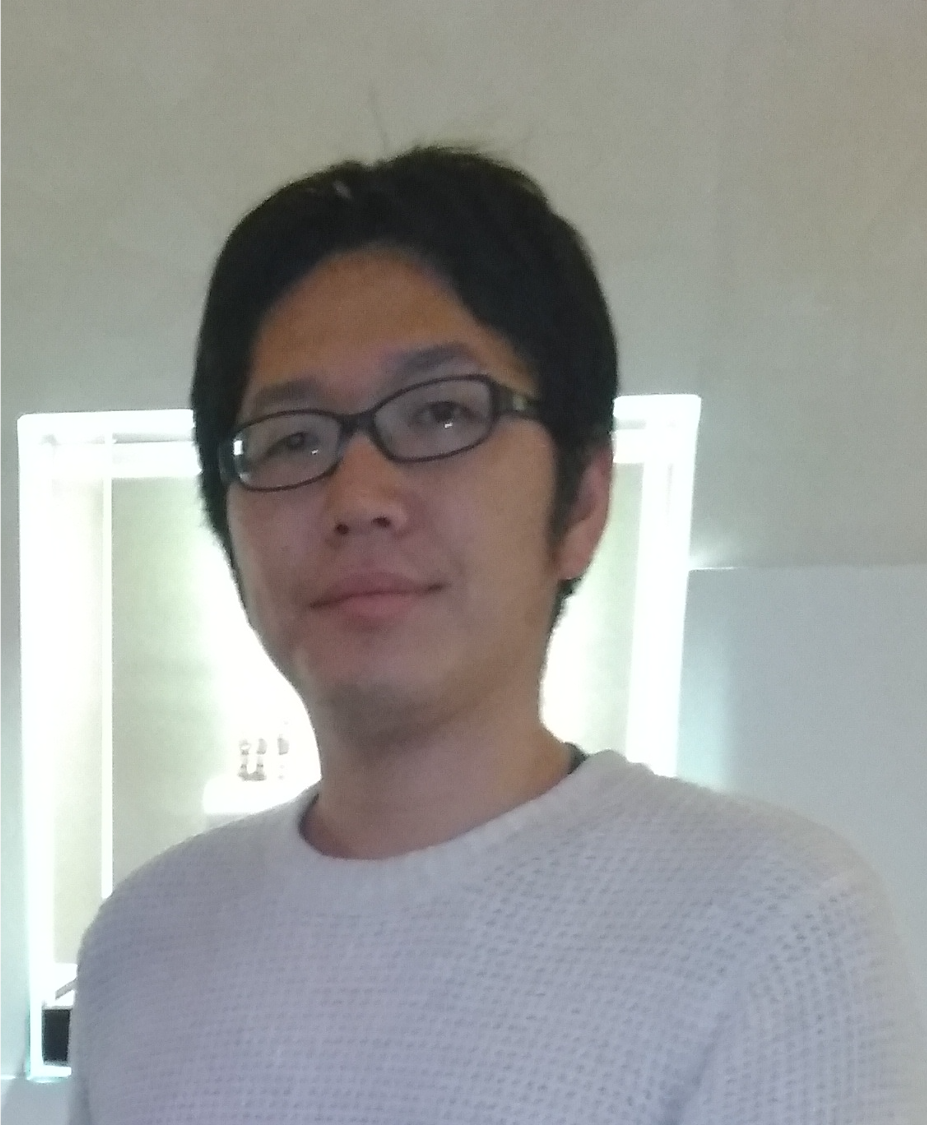 |
■■■ FUKUSHIMA, Akinori [福島啓悟] |
| Akinori Fukushima received B.S., M.S., and Ph.D degrees in mechanical engineering from Kyoto University in 2006, 2008, and 2011, respectively. He was a postdoctoral researcher at Tohoku University from 2011 to 2014, and an assistant professor at Tokyo University of Agriculture and Technology from 2014 to 2016. His research interests numerical simulation of the nanoscale fluidic system and functional materials, such as large molecule. |
|
Lecturer, Department of Mechanical Engineering, University of Fukui ……………………………………………………………………………………… ■Presentation Title■ Molecular Dynamics Study of Water Droplet Dynamics on Solid Wall in High Temperature Condition <ABSTRACT> The temperature dependence of the liquid-solid surface tension coefficient of Fe-water is evaluated by molecular dynamics simulations. The dynamics of the droplet highly affects on the cooling process of the steel, and thus it should be clarified to obtain the basic insight to improve the cooling process. From our simulations, the magnitude correlation between the contact angles of Fe-water depends on the temperature. It means that the dynamics of the water droplet on the high-temperature Fe surface may be different from that on the low-temperature Fe surface. Return to Session5 |
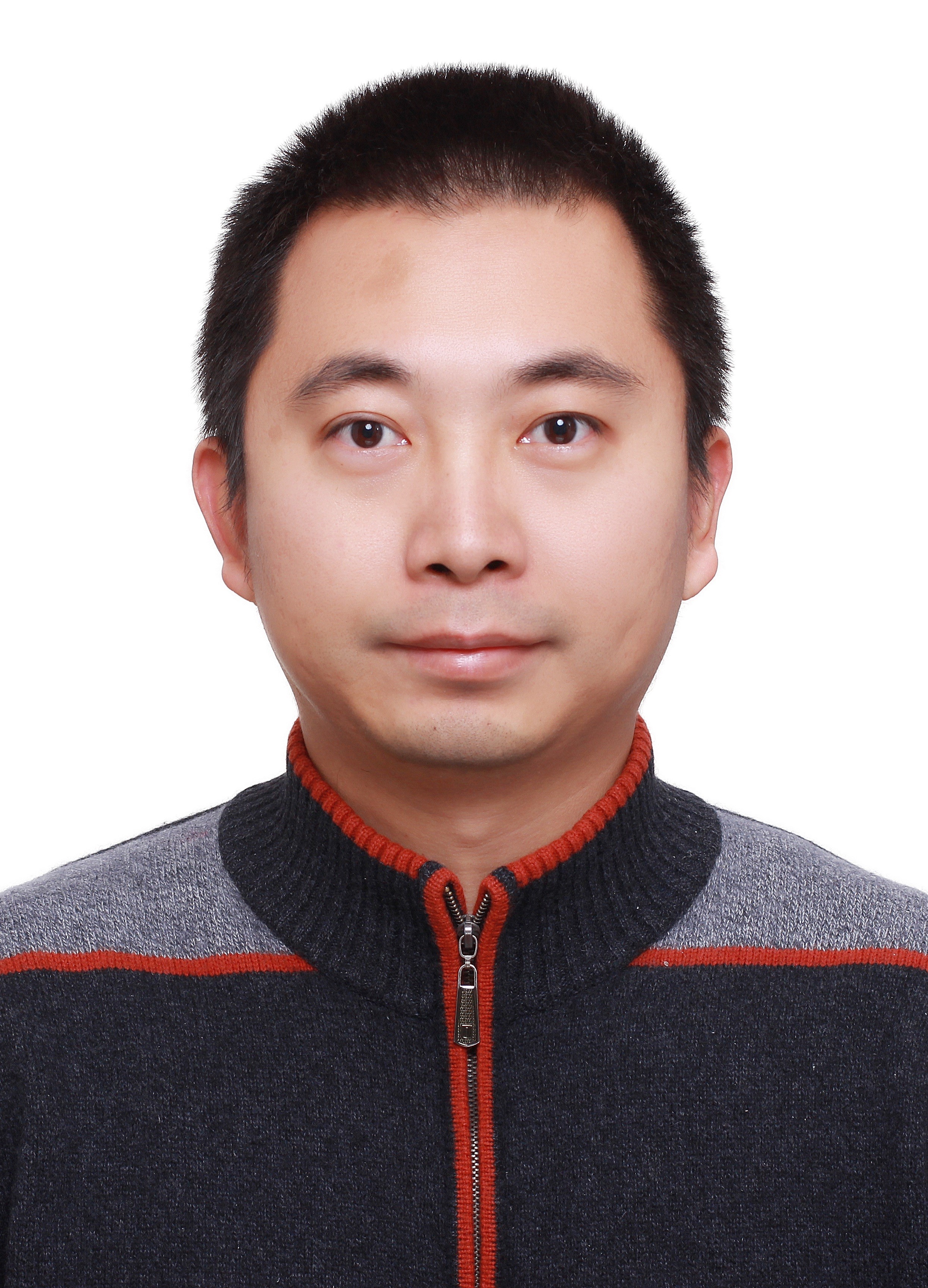 |
■■■ CHEN, Jie [陈杰] |
| He received PhD in Physics from National University of Singapore in 2012. He has won multiple academic awards, including WFF Ph. D. Prize in Environmental and Sustainability Research (2012), and ETH Postdoctoral Fellowship (2013~2015). He has published two book chapters and over 40 papers in international peer-reviewed journals. His research is focused on the nanoscale heat and mass transfer, thermoelectric materials, and the thermal interface materials. |
|
Professor, School of Physics Science and Engineering, Tongji University ……………………………………………………………………………………… ■Presentation Title■ Thermal Transport in Graphene-Based Nanomaterials <ABSTRACT> The increasing power density and the decreasing dimensions of transistors present severe thermal challenges to the design of modern microprocessors. The ultrahigh thermal conductivity of graphene makes it a promising candidate to address such problem, and thus has attracted intensive interest. In this talk, I will first present our recent progress on developing graphene based nanomaterial for heat dissipation applications, including covalently bonded graphene-CNT hybrid and effective strategies for promoting the heat transfer across solid-liquid interface. Furthermore, we find the size and temperature dependence of thermal conductivity in graphene can be controlled by the defect/doping concentration and the substrate, which opens doors for novel heat management applications, such as thermal diode. Finally, I will discuss the coherent phonon transport in graphene phononic crystal structure and how to tailor the thermal conductivity of materials based on a new path via phonon localization. Return to Session5 |
━━━━━━━━━━━━━━━━━━━━━━━━━━━━━━━━━━━━━━━━━━━━━━━━━━